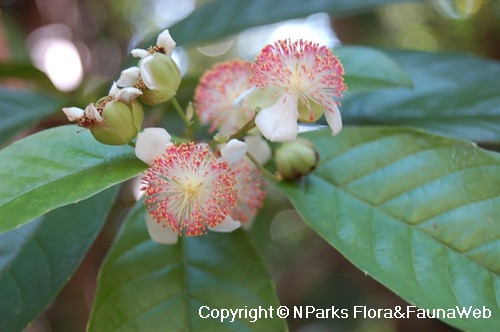
Back
Tetracera indica (Christm. & Panz.) Merr.
| Family Name: | Dilleniaceae |
| Synonyms: | Tetracera laevis, Tetracera dichotoma, Acrotrema exotica, Tetracera wahlbomia, Tetracera assa, Wahlbomia indica, Acrotrema laevis, Tetracera malabarica, Tetracera trigyna |
| Common Name: | Mempelas, Akar Mempelas, Tetracera, Hedge Row Tetracera, Puson Dumarun, Akar Pulas Duyio, Empelas, 锡叶藤属 |
Tetracera indica is a woody climber that can grow up to 5 m. The young stems are deep red before maturing into greyish-brown. This sun-loving plant produces clusters of four to seven flowers, each with numerous pink-tipped stamens that create a pink-and-white powderpuff like display. Its common name, “Sand Paper Vine” references its rough textured leaves. Southeast Asian communities traditionally used these abrasive leaves to smooth wood and polish objects.
Name
Classifications and Characteristics
| Plant Division | Angiosperms (Flowering Seed Plants) (Dicotyledon) |
|---|---|
| Plant Growth Form | Climber |
| Lifespan (in Singapore) | Perennial |
| Mode of Nutrition | Autotrophic |
| Maximum Height | 5 m |
Biogeography
| Native Distribution | From India to Myanmar, Thailand, Peninsular Malaysia, Singapore, Sumatra and Java. |
|---|---|
| Native Habitat | Terrestrial (Primary Rainforest) |
| Preferred Climate Zone | Tropical |
| Local Conservation Status | Native to Singapore (Least Concern (LC)) |
Description and Ethnobotany
| Growth Form | A woody climber up to 5 m long. |
|---|---|
| Trunk | Woody stem has greyish brown bark. It is highly branched with smooth branches. Young stem is deep red. |
| Foliage | Leaves are elliptic or obovate with a serrate leaf margin (5 - 12 cm long, 3 - 5 cm wide). The apex of the leaf is acute or obtuse, while the base is acute. The veins on the underside of the leaf bear a sparse or dense set of stiff, thick bristles. |
| Flowers | Flowers have 3 - 5 petals, 3 - 4 carpels and numerous pink-tipped stamens (2.5 - 3 cm wide). Groups of usually 4 - 7 flowers are arranged in terminal inflorescences (5 - 8 cm long). Flowering followed by fruiting occurs from April to September. |
| Fruit | The fruit is leathery, round or oblong (0.8 - 1 cm wide), and has a thin beak at the apex which is the remainder of the style (0.2 - 0.6 cm long). They typically each have 2 dark brown or black, egg-shaped seeds wrapped in red arils (fleshy tissue). These fruits are classified as follicles. A follicle is a dehiscent fruit formed from 1 ovary of a flower and occurs singly or fused together with other follicles. |
| Habitat | Occurs in open forests, forest margins or scrub. This species is usually found at low altitudes of up to 100 m, but sometimes up to 600 m. |
| Etymology | The species epithet "indica" means that it comes from India. However, the origin of this species is actually in Southeast Asia. |
| Ethnobotanical Uses | Medicinal: Traditional Medicinal Uses In Malaysia, the Malay communities used the dry powder of leaves to cure inflammation, while the Temuan Tribe used the roots for treatment of high fever and patients with hypertension. The Machang Tribe used mixture of roots and leaves to treat skin diseases. <1> In Indonesia, the communities in South Sumatra used the stem extract to treat kidney stone and gout. <2>
It is important to note that some therapeutic effects from traditional medicinal uses of plants are not currently supported or verified by scientific research. Others: The rough leaves are used like sandpaper in villages, such as for polishing and scouring. The stems hold water that can be drunk. They can also be used to make ropes. |
Landscaping Features
| Landscaping | This species can be used to add colour to the landscape, because its young stems and fruits have an attractive bright red colour. The fruits have an interesting form, because they are often fused together in clusters of 3 and have thin beaks. It may be pruned into a dense bush that can hide unsightly fixtures. It can also be trained as a climber to cover trellises. Although this species has good potential as a landscaping plant, it is not commonly used and can provide a unique look for your landscaping project or home garden. Cultivation: This species is not often used in landscaping. Thus, there is little information on its specific cultivation requirements. |
|---|---|
| Desirable Plant Features | Fragrant (Flowers) (Day), Ornamental Flowers, Ornamental Stems, Ornamental Fruits |
| Landscape Uses | Suitable for Hanging Baskets, Container Planting, General |
Plant Care and Propagation
| Light Preference | Full Sun |
|---|---|
| Water Preference | Moderate Water |
| Plant Growth Rate | Fast |
| Rootzone Tolerance | Fertile Loamy Soils, Well-Drained Soils |
| Maintenance Requirements | Moderate |
| Propagation Method | Seed, Sucker |
| Propagation Method Remarks | Propagate by seed or by replanting the suckers. |
Foliar
| Foliage Retention | Evergreen |
|---|---|
| Mature Foliage Colour(s) | Green |
| Mature Foliage Texture(s) | Smooth |
| Foliar Type | Simple / Unifoliate |
| Foliar Arrangement Along Stem | Opposite |
| Foliar Shape(s) | Non-Palm Foliage (Obovate, Elliptical) |
| Foliar Venation | Pinnate / Net |
| Foliar Margin | Serrate / Toothed |
| Foliar Apex - Tip | Acute, Obtuse |
| Foliar Base | Acute |
| Typical Foliar Area | Notophyll ( 20.25cm2 - 45 cm2 ) |
Non - Foliar and Storage
| Bark Colour(s) | Greyish brown |
|---|---|
| Mature Bark Texture | Smooth |
| Stem Type & Modification | Woody |
| Root Type | Underground (Tap Root) |
Floral (Angiosperm)
| Flower & Plant Sexuality | Bisexual Flowers |
| Flower Colour(s) | Pink, Red, White |
|---|---|
| Flower Symmetry | Radial |
| Flower Lifespan on Plant | Several Days |
| Flowering Habit | Polycarpic |
| Flowering Period Remarks | Flowers from April to September. |
Fruit, Seed and Spore
| Mature Fruit Colour(s) | Red |
|---|---|
| Fruit Classification | Simple Fruit |
| Fruit Type | Dehiscent Dry Fruit , Follicle |
References
| References | <1> Muharni, Elfita, Yohandini, H., Julinar, Oktaviani, M. (2019). β- Sitosterol and Betulonic Acid from n-Hexane Extract the Stem Bark of Tetracera indica. Molekul, Vol. 14. No. 2, November 2019: 103 –109. https://ojs.jmolekul.com/ojs/index.php/jm/article/view/507 Accessed on 27 Dec 2023. <2> Muharni, Elfita, Adillah, R., Yohandini, H., Julinar. (2018). Flavon Compound from The Ethyl Acetate Extract of The Stem of Supit (Tetracera indica Merr.). Molekul, Vol. 13. No. 1, Mei 2018 : 38 – 47 |
|---|
Image Repository
Others
| Master ID | 220 |
|---|---|
| Species ID | 1516 |
| Flora Disclaimer | The information in this website has been compiled from reliable sources, such as reference works on medicinal plants. It is not a substitute for medical advice or treatment and NParks does not purport to provide any medical advice. Readers should always consult his/her physician before using or consuming a plant for medicinal purposes. |

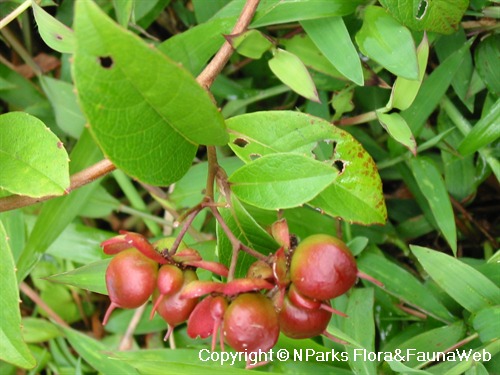
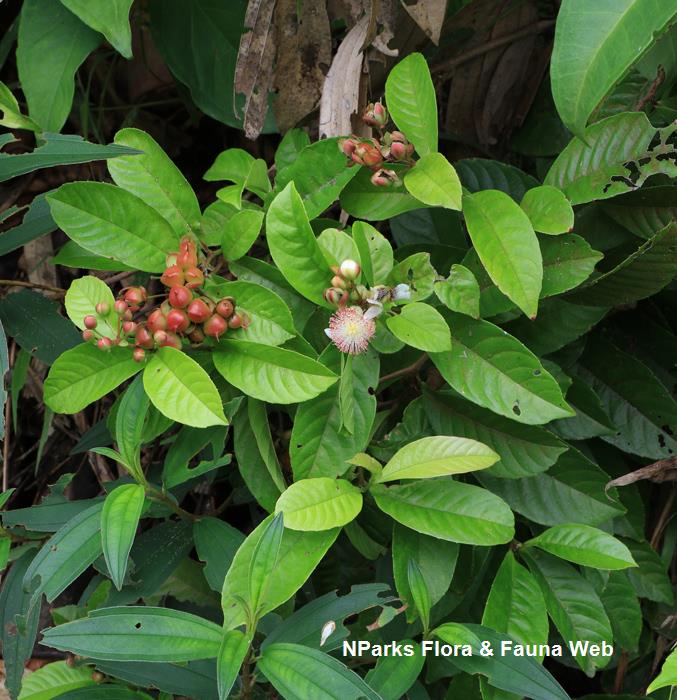
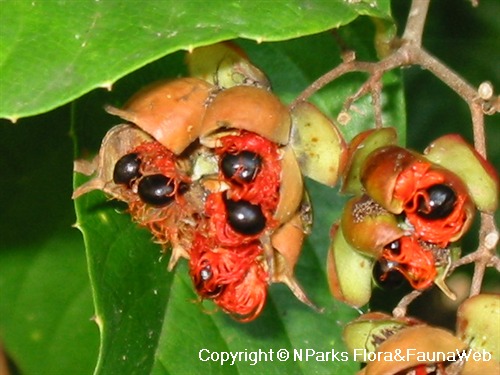
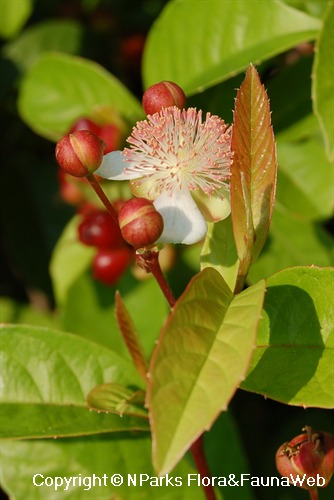
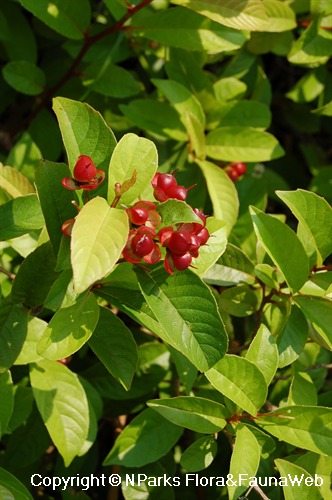
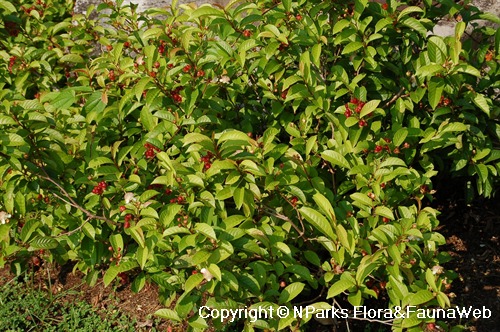
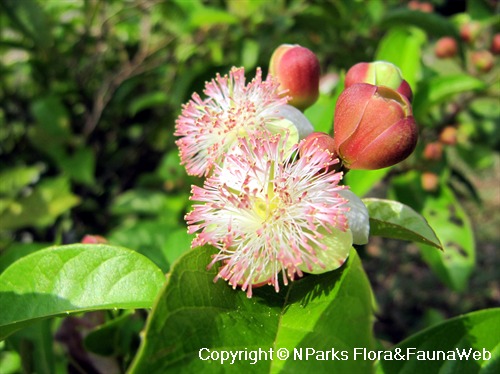

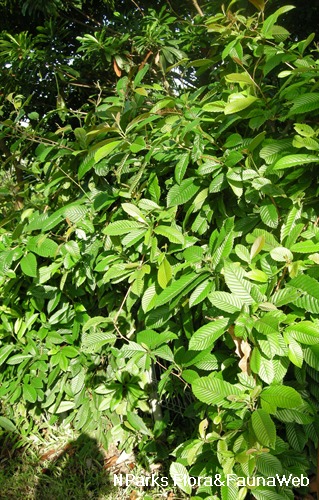
.jpg)